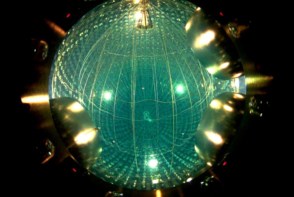
Physicists in Italy have shown how to transfer entropy from one ultracold gas to another using a laser beam. They say that the resulting low-entropy gas could be the ideal system for investigating quantum phenomena that can only exist in highly ordered environments.
Studying the quantum properties of gases requires cooling them down to a fraction of a Kelvin using various laser-based and magnetic techniques. Creating Bose–Einstein condensates (BECs), for example, means reaching just a few tens or hundreds of nanoKelvin. At this point an atom’s de Broglie wavelength, which is inversely proportional to its momentum, becomes long enough so that it is comparable to the spacing between atoms, which causes all the atoms to condense into the quantum ground state.
In addition to cooling atoms, however, physicists also want to minimize their entropy. One principal aim is to create “quantum simulators”, in which the atoms exhibit similar quantum phenomena to that in superconductors and other “real-life” materials.
Ease of control
A simulator could consist of a lattice of ultracold atoms held in place by laser beams in which the properties of the atoms are easily tunable. For example, the probability of an atom tunnelling from one lattice site to another or the interaction between the particles could be easily controlled, something that is extremely difficult to do in condensed-matter systems such as crystals.
Moreover, unlike crystals, in which impurities or defects could mask some basic quantum properties, atoms in optical lattices represent almost ideal systems with virtually no impurities. The challenge in building such a simulator, however, is ensuring that the atoms have a low enough entropy – a quantity related to disorder – that they can exist in precise lattice arrangements.
Now, Massimo Inguscio, Francesco Minardi and colleagues at the University of Florence, together with Sandro Stringari at the University of Trento, have demonstrated a new scheme that makes it easier to reach such low entropies. This involves putting a mixture of potassium and rubidium atoms into a magnetic trap and then cooling the mixture. Directing a laser beam with just the right wavelength into the trap compresses the potassium at the focal point of the beam while leaving the rubidium virtually unchanged.
Classical explanation
The result is that entropy is transferred from the potassium to the rubidium atoms in a process that can be understood using classical thermodynamics. Filling an isolated box with one gas and compressing the gas with a piston would raise the temperature of that gas. But mixing it with a second gas that can flow through the piston will result in a transfer of heat and therefore entropy from the first to the second gas when the first gas is compressed.
Commenting on the work, Dan Stamper-Kurn of the University of California Berkeley writes that the Florence team is not the first to use one quantum gas to cool another. But, he says, unlike previous groups, it has managed to transfer this entropy reversibly, in other words it has been able to shuttle the entropy back and forth between the refrigerator and target gases. This was shown by repeatedly moving the potassium into and out of the BEC state. This is important because it shows that the process is not irreversible and introducing heat into the system that cannot be removed.
Stamper-Kurn adds that the system can also be used to identify phase transitions of poorly understood target gases with exotic quantum properties. This, he says, can be achieved by measuring the state variables, such as temperature, pressure or magnetization, of the well known refrigerator gas at two different points in the experiment since these reveal how the entropy and temperature of the target gas change.
‘Textbook thermodynamics’
“It is also really nice to see how textbook thermodynamics can be applied to a quantum system” Jacopo Catani, University of Florence
Other groups, such as that of Wolfgang Ketterle of the Massachusetts Institute of Technology in the US, have transferred entropy not between two distinct gases but between one region of a gas and another. However, Florence team member Jacopo Catani points out that Ketterle’s research was aimed more at producing BECs reversibly, whereas the work of his group is a more versatile way of reducing entropy since the target and refrigerator gases can be easily isolated. He estimates that this research might lead to the creation of a quantum simulator within the next three years, but adds that it is not just the potential applications of the work that he finds satisfying. “It is also really nice to see how textbook thermodynamics can be applied to a quantum system,” he says.
The research is reported in Physical Review Letters.



